
Review on TOGGLER SnapSkru Self Drilling Glass Filled Fastener Fasteners by Robert Aiono

Awesome but requires a bit of skill
It holds great, works great and is one of the best drywall screws I've ever used. I'm almost done with the whole package. It holds my heavy table lamp to become a wall light mounted on a hanging shelf (if you know what I mean!). And the plastic itself is strong but with some elasticity, making it more durable and not brittle, preventing the plastic clasp from breaking easily. But like all other common tools and gadgets that you can use, some skills are required. As some people say, it breaks...yes, it breaks if you use excessive force and spin it around like a monster. I always take a screwdriver as thick as the tip of this latch, drive it directly into the wall without nails to a depth of 1/4" (NO, you don't need a drill if it's real drywall). Then I drive the screwdriver lightly into the plaster wall until it penetrates so deep into the layer of plaster that I get a hole that penetrates the inner free part of the wall. It goes dink, dink, dink, *puff*. You stop here. Yes , You can dig into a wall with a locking screw, but you have to do it slowly, gracefully and carefully because of course you're digging through plaster with a piece of plastic that has a blank part inside.. I'm not sure why People complain about it not digging on its own. Yes that's true. Just don't be clumsy and dig too fast like with metal nails or drill bits. It takes common sense and patience. And yes I've tried that and it's the only one , the Worked 9 times out of 10 compared to some other cheap branded (or unbranded) screws I've used that came with furniture or hanging shelves etc. So after making a hole in the wall to make my life easier, then I insert the pointed part of the carabiner, start driving the screw into the drywall with the carabiner (I can use the same screwdriver that I made the hole) and make sure it is screwed in one layer of plasters. Then I stick a nail into this "+" latch (again, I can use the same screwdriver). And then I hear this "click". And it's okay. You can unscrew it if you do a neat (but not difficult) job. But hopefully you don't have to. Why did I say 9 times out of 10? And why did I say "real drywall"? It's because of these situations. There may be a CONCRETE BEAM in a certain part of the drywall, for example in the middle of the wall or something. NOT WOOD, but CONCRETE or something. I feel like I can dig more because it allows me to dig with the tools I have. So I tried to keep digging and tried to set the latch. But because the density and strength is different than that of a plastered drywall, which will soon encounter empty space, the latch broke. It's stuck there. I couldn't find out. However, this happened because it is no longer DRYWALL. Immediately behind the layer of plaster there is a layer of concrete without a free gap. So I just left the broken plastic there and filled the hole with cement. I made a new hole 3 inches from this part. Yes, now it was an ordinary dry (plastered) wall again. Dink, Dink, *puff*. And Snapscru worked like a charm as always. I hope this helps despite all the whiny negative reviews you see.... I'm by no means a setup expert, but they are very beginner-friendly and durable. I had a hanging shelf that I had to force against the wall. He was still super strong. I love them and will buy more of these later if I need more. But hey, I have a lot. I bought way more than I needed thinking half of them would break. But no, only one broke and I have plenty left and I used/replaced some other shelves.
- Industrial & Scientific
- Something different
New products
Comments (0)
Top products in 🪝 Anchors
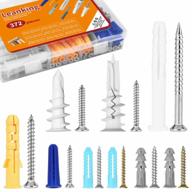
372Pcs Leanking #8 Self Drilling Drywall Anchors Assortment Kit - 7 Variety Heavy Duty Plastic Anchors & 2 Kinds Of Self-Drilling Gypsum Wall Board Anchor Screws

16 Review
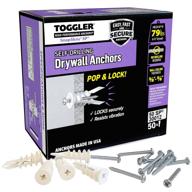
🔩 SnapSkru Glass Filled Fastener by TOGGLER

10 Review
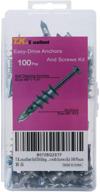
🔩 Top-Quality T K Drilling Drywall Anchors Assortment

10 Review
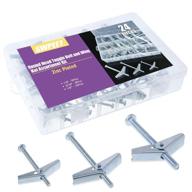
🔗 Simplify Drywall Hanging with Swpeet Assorted Toggle Hooks

10 Review
Another interesting products
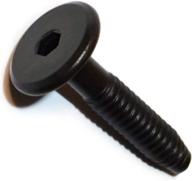
Highly 🔗 Sought-After Fastener: Connector 014973445713

9 Review
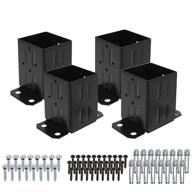
Premium Eapele 4X4 Wood Fence 🪵 Post Anchor Base: Secure Your Fence with Ease

8 Review

POWERTEC 4 Inch 20 2 Inch QTB1005 T Slot: A Revolutionary, High-Quality Power Tool Accessory!

8 Review
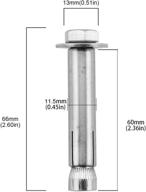
🔩 5-Pack of M8x60mm Stainless Steel External Hex Expansion Bolts by Yasorn

10 Review

